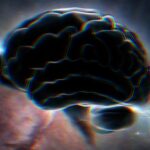Scott Symington
3.3 Third Intersection: 4 Types of Interaction
Any two valid forms of knowledge (as defined previously), for example, physics and mathematics, science and philosophy, history and archeology, theology and science, theology and history, either can or do not interact. If two valid sources do interact, then there is a continuum of agreement upon which this interaction would lie, and four distinct types of interaction on this continuum, all of which, except one, have been addressed in the literature.[1]
[1] The kinds of interactions were categorized, according to theologian and physicist John Polkinghorne as: (1) conflict between the disciplines, (2) independence of the disciplines, (3) dialogue between the disciplines where they overlap and (4) integration of both into one field. John Polkinghorne, Science and Theology (SPCK/Fortress Press, 1998), 20-22. Theologians Ian Barbour and John Haught provide similar categorizations. More can be found by theologian and biochemist Arthur Peacocke, with reference links provided by Wikipedia.
3.3.1 COMA
If the two sources of knowledge are valid, do interact, and if there was complete knowledge, meaning all the possible data was in and was accurate, if we had a sort of God’s-eye-view, then wherever the two sources viewed the same subject (intersected), there would be complete concord. William Dembski gave a lecture regarding information content in biological molecules, and during the interesting talk, NOMA was brought up. Dembski supplied his idea: if a theology is accurate to reality, then all knowledge in science and theology will agree in a Completely Overlapping Magisteria model (COMA). Great acronym. Some have used the “all knowledge is God’s knowledge” phrase. While I agree to some extent, I noted in the Q and A that his model is from God’s perspective, while the relationship in question involves science and theology as tools or viewpoints from humanity’s application and perspective. And currently, we do not have complete knowledge, therefore we have not, reached COMA.
In addition, there are areas in the knowledge encircled by science that are outside of the area encircled by theology, and vice-versa. The Bible does not provide: “And on the sixth day God synthesized deoxyribose nucleic acid, but the polymerization of complex proteins, enzymatically catalyzed by . . .” If I want to learn about electric and magnetic dynamics, I will not be looking in the Bible (or anywhere in the theology circle), but instead will look within the science circle, and perhaps the intersection with the mathematics circle, where Maxwell’s work is located. Similarly, I don’t count on science to explain why there is something rather than nothing, or about the ontology of objective morality. If I want to stand upon truth regarding how to have a relationship with God, and assurance of the best outcome for me and loved ones, especially eternally, then I will look in theology (and also into science, philosophy, history, etc., to determine which worldviews stand on rock, and which on sand).
Polkinghorne adds that while there will be a consonance between the answers science and a specific theology give if both accurately provide answers to a fundamental unity of reality, still, “neither science nor theology should make the mistake of supposing that it can answer the other’s proper questions.”[1]
After presenting the SOMA model to get his opinion, Dembski, acting out what I had expected after a couple of previous conversations and interaction with some of his work, showed humility and quick, focused thought, by avoiding a defensive stance for his idea (with the better acronym), and instead agreed the SOMA model is right, and then provided two excellent supports, which I still have to buy the mp3 of the conference in order to retrieve and add his examples to this paper.
Bottom-line
COMA is accurate if you are talking about a God’s eye view of science and theology, and only in the areas of intersection. Therefore, the applicability of this model, like NOMA, has a limited scope.
[1] John Polkinghorne and Philip Clayton (ed.), The Oxford Handbook of Religion and Science (Oxford University Press, 2006), 57.
3.3.2 Proof
Science does not accept things as “proven”. And as far as the Christian God, and therefore the biblical model, proof is also not the goal. God does not seek propositional knowledge, or just believing that he exists, but instead purposes for a relationship of love and trust. Gaining redemption and a saving relationship with God is by grace, a gift we would be incapable of earning, so it is not part of the biblical model that we can plug in our wisdom, and by our intelligence solve an equation and prove that God exists. If that were how we gain eternal relationship with God, then heaven would look a cast shot in Leonard’s and Sheldon’s room in The Big Bang Theory.
There can be enough evidence to convince, but not compel belief. Therefore, just less than “proof” would be an upper limit on the continuum of this relationship between two fields that disallow proof.
3.3.3 Conflict
At the opposite end of the continuum of agreement, are the conflict models. Cornell University’s Andrew Dickson White published a book entitled, A History of the Warfare of Science with Theology in Christendom. The metaphor of “warfare” to describe the relations between science and the Christian faith became very common at the end of the 19th and first half of the 20th century in Western culture, even with Christians. John William Draper followed along with White in arguing continuous conflict through history, methodologically, factually and politically. Conflict examples included claims that the biblical worldview hindered the progress of science, churches relying on prayer instead of using lightening rods, and the Galileo affair. Contemporary scientists and speakers such as Richard Dawkins, Steven Weinberg, Carl Sagan, Jerry Coyne, Daniel Dennett, Neil deGrasse Tyson, Richard Shermer, as well as many theist “creationists” also promote the idea. The conflict thesis remains popular in the public perception, and is fostered in popular media, such as seen, for example, in outspoken atheist, and creator of Family Guy, Seth MacFarlane’s work.
However, most contemporary historians of science reject the conflict thesis.[[1]][[2]][[3]][[4]] Much of the scholarship that served as a basis for the conflict thesis has been discredited as inaccurate or misrepresented. For example, modern historians of science such as J.L. Heilbron, Alistair Cameron Crombie, David Lindberg, Edward Grant, Thomas Goldstein, Ted Davis, Charles Thaxton and Nancy Pearcey posit that not only is the idea of Christian theology stunting science an inaccurate understanding, but Christianity actually has a sustained history of preserving and fostering education and science.
The Johns Hopkins University Drew Professor of the Humanities, Lawrence M. Principe, states that even current-day conflict is limited to religious and science extremists, over only very few topics, and that the flow of ideas between scientific and theological thought has been more the norm.[5]
Gary Ferngren, a Historian of Science, adds: “If Galileo and the Scopes trial come to mind as examples of conflict, they were the exceptions rather than the rule.”[6] And then, of course, are all the examples of concordance, dialogue, and mutual support between science and theology.
While a better understanding of the history of science has moved scholars away from the conflict model of the relationship, nevertheless, some forms of conflict do exist. Because there are mutually exclusive theologies, which mean that only one at most can be accurate to reality wherever theologies contradict, one should expect conflict between science (or other valid methods of study, such as history) and most theologies (at least those that are testable). This is precisely what we do see, which will be left to the reader to look into further as the subject and evidence are voluminous and will not be covered here.
What about Christian theology, which has been the focus of most of the scholarship concerning science and theology interaction, and the focus of this paper? Conflict situations have in the past, do currently, and will in the future occur. While the conflicts may be the exception, and there are established examples of mutual support, as noted previously, the specific conflicts have to be taken into account in an interaction model that has sufficient explanatory scope.
Bottom-line
While the conflict model has been discredited, there are examples of conflict, therefore, conflict exists, but is applicable only to a limited extent.
Even if two sources of knowledge are valid, and show areas of agreement and mutual support, if one or both fields disallow proof, or if we are not at the point of complete and accurate knowledge, or if influential-external factors are involved, which is certainly the case when people are dealing with such serious and personal concerns as theology brings, then there will likely also be conflicts between even two valid fields.
This is getting complex! And brings us to the last potential model, which combined with the others funnels us toward the new model that contains the accurate points of the former ones, and expands the explanatory scope to allow for dynamic testing as new discoveries keep coming.
[1] C.A. Russel, and Gary B. Ferngren, ed., Science & Religion: A Historical Introduction (Johns Hopkins University Press, 2002), 7 “The conflict thesis, at least in its simple form, is now widely perceived as a wholly inadequate intellectual framework within which to construct a sensible and realistic historiography of Western science.”
[2] Steven Shapin, The Scientific Revolution (University of Chicago Press, 1996), 195. “In the late Victorian period it was common to write about the ‘warfare between science and religion’ and to presume that the two bodies of culture must always have been in conflict. However, it is a very long time since these attitudes have been held by historians of science.”
[3] John H. Brooke, Science and Religion: Some Historical Perspectives (Cambridge University Press, 1991), 42. “In its traditional forms, the conflict thesis has been largely discredited.”
[4] Gary Ferngren, ed., Science & Religion: A Historical Introduction (Johns Hopkins University Press, 2002), x “… while [John Hedley] Brooke‘s view [of a complexity thesis rather than an historical conflict thesis] has gained widespread acceptance among professional historians of science, the traditional view remains strong elsewhere, not least in the popular mind.”
[5] Lawrence M. Principe, Science and Religion (The Teaching Company, 2006), as noted in Wikipedia: relationship between religion and science.
[6] Gary Ferngren, ed., Science & Religion: A Historical Introduction (Baltimore: Johns Hopkins University Press, 2002), Introduction, p. ix.





















Facebook Comments